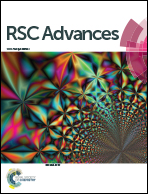Synthesis and properties of a millable polyurethane elastomer with low halloysite nanotube content
Abstract
Nanocomposites comprised of millable polyurethane (MPU) and very low loadings of halloysite nanotubes (HNTs) have been prepared with high tensile strength and elongation at break, and cured using either toluene diisocyanate dimer or dicumyl peroxide as crosslinking agents to further enhance the mechanical performance of the nanocomposites and to reduce costs. A 1.17-fold increase in tensile strength and a 0.58-fold increase in elongation at break was achieved for synthetic linear polyurethane elastomer nanocomposites by incorporating only 1 wt% of HNTs, and these increases were primarily attributed to the formation of covalent bonds between the OH groups of HNTs and the NCO groups of 4,4′-diphenyl-methane diisocyanate (MDI). Remarkable improvements in Young's modulus were further obtained after curing using the crosslinking agents. The nanostructure of these nanocomposites consisted of individual HNTs covalently bonded and specifically associated with hard MPU microdomains, and therefore affected the degree of phase separation, as characterized by spectroscopy studies and direct microstructural analysis. Moreover, an unprecedented environmental solvent-free prepolymer method has been proposed to compound the MPU/HNTs nanocomposites.


 Please wait while we load your content...
Please wait while we load your content...